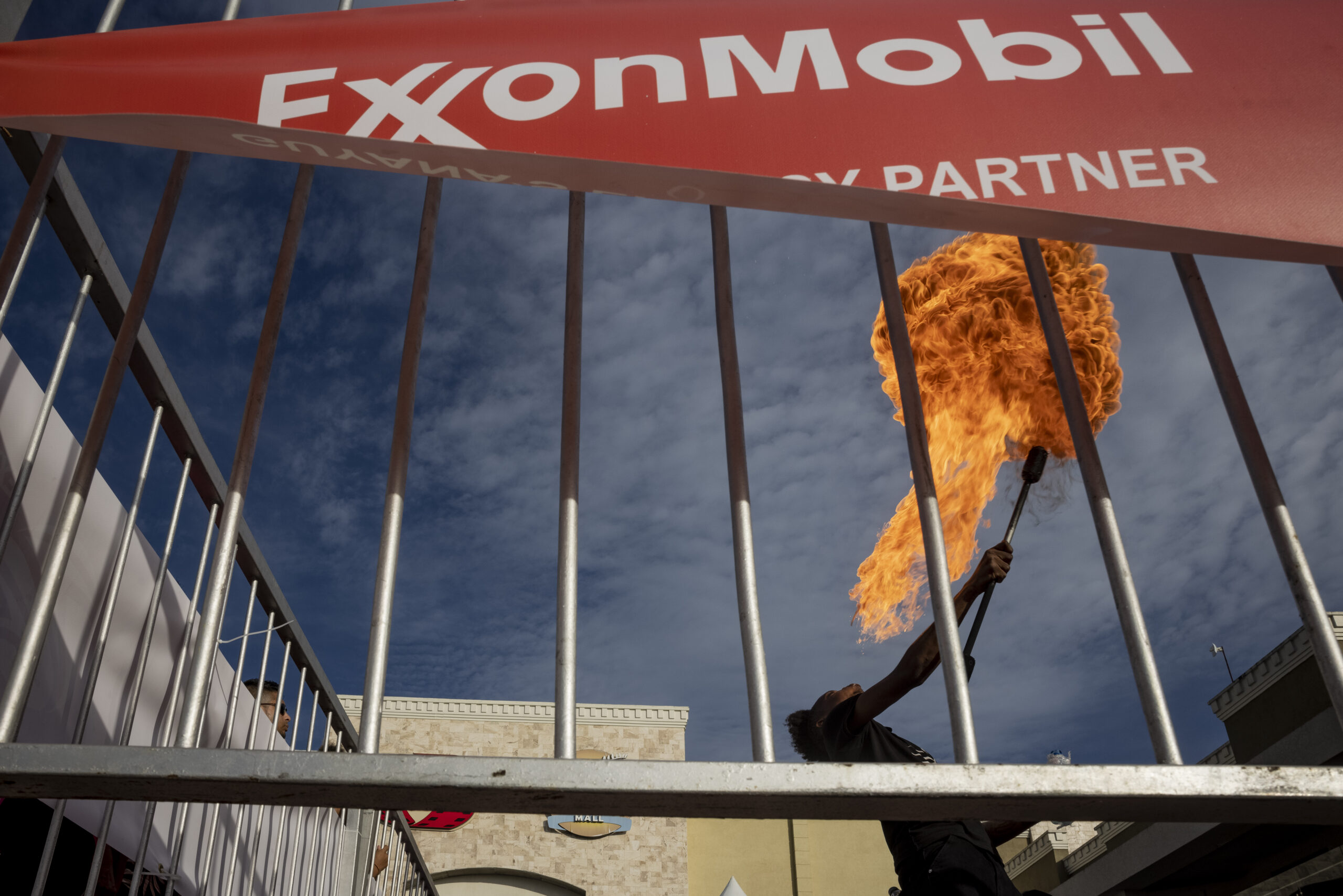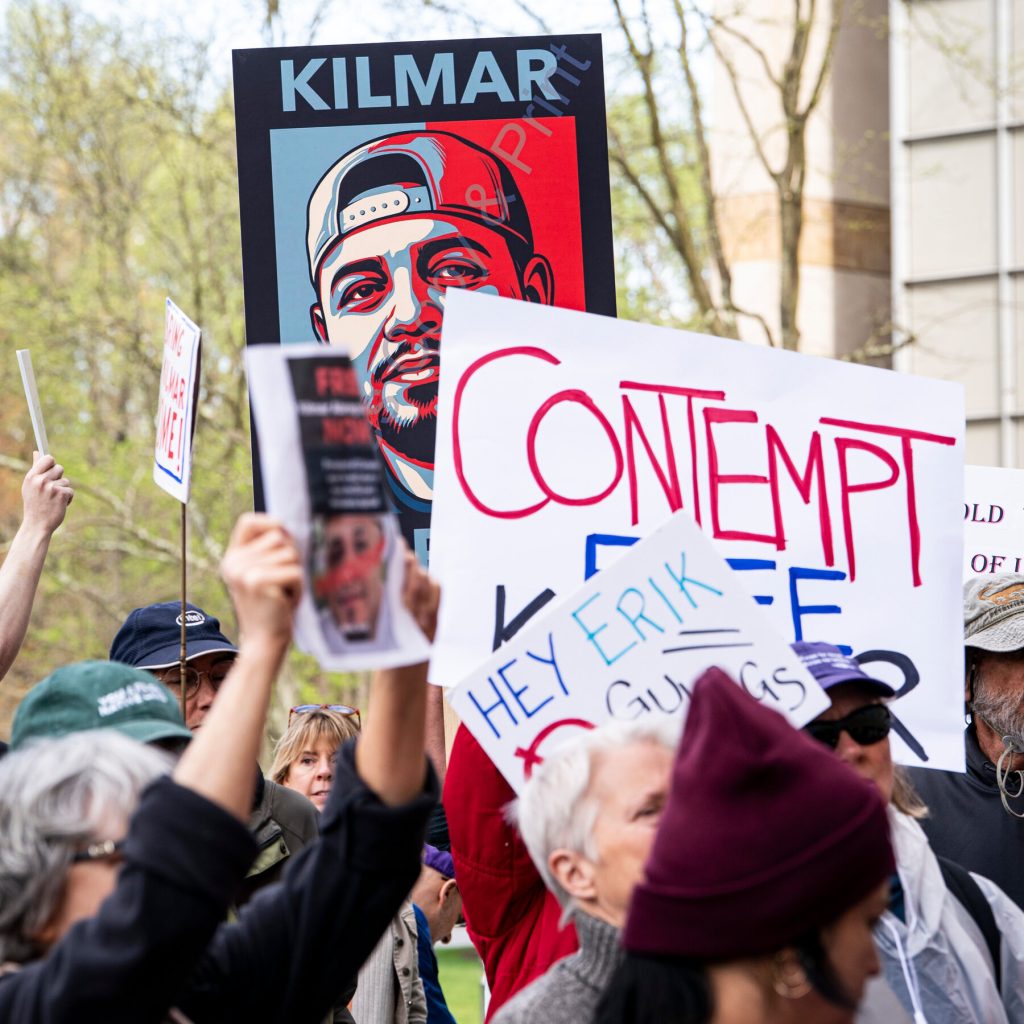Now Reading: ExxonMobil helps Amazon nation Guyana build ‘petrostate’, while people stay poor
-
01
ExxonMobil helps Amazon nation Guyana build ‘petrostate’, while people stay poor
ExxonMobil helps Amazon nation Guyana build ‘petrostate’, while people stay poor

This piece is a component of the Every Last Drop project, which was backed by the Global Commons Alliance sponsored by Rockefeller Philanthropy Advisors. It was created by the Geojournalism Unit of InfoAmazonia with the support of the SERRAPILHER INSTITUTE.
In Georgetown, the capital of Guyana, the noise of heavy trucks carrying materials for large construction projects resonates across the city. Significant developments such as a new bridge over the Demerara River, an artificial island, contemporary buildings, and lavish hotels serve as symbols of the prosperity anticipated from the oil industry. Foreign employees of recently established companies have already given it the nickname “the new Dubai.”
ExxonMobil, a US fossil fuel giant, holds a dominant position in oil production in Guyana. In 2015, the company announced one of the largest oil discoveries globally in the past decade. Through its subsidiary, Esso Exploration and Production Guyana, ExxonMobil leads the consortium for the Stabroek oil block, a 26,800-square-km area off the coast of Guyana, alongside American Hess Corporation and China’s CNOOC.
Despite its expanding footprint, ExxonMobil has encountered legal hurdles and allegations of environmental misconduct. The company is accused of disregarding environmental permits to increase production and profits across the three operational fields within the block, collectively producing 650,000 barrels per day. With the approval of three more fields, daily production is expected to double to 1.3 million barrels by 2027.
The Amazon rainforest now emerges as the new global oil frontier. The investigation conducted in November 2024 by InfoAmazonia in Georgetown and surrounding areas revealed environmental violations by ExxonMobil in Guyana. The study also exposed how the Guyanese government relaxed environmental regulations, favored oil companies over the public in contracts, and supported corporations in legal disputes, signaling the nation’s evolution into a “petrostate.”
Sherlina Nageer, an environmentalist and founder of the Greenheart Movement advocating for alternatives to the oil industry, criticized the capture of institutions by foreign interests, particularly ExxonMobil. The Amazon basin, covering eight countries including Guyana, holds around 20% of the world’s identified oil and gas reserves from 2022 to 2024, most of which remain undeveloped.
Despite Guyana’s GDP growth propelled by the oil industry, poverty persists in the country. Despite the country’s unemployment rate of 14%, major construction projects in Georgetown are undertaken by Chinese firms with predominantly Asian labor. The government and ExxonMobil are collaborating on a $2 billion project to supply gas from offshore platforms to power the country’s electricity grid, promoted as an emissions reduction strategy.
One of the environmental practices of ExxonMobil under scrutiny is gas flaring, which releases significant amounts of carbon dioxide and methane, contributing to global warming. The company reportedly flared 687 million cubic meters of gas off Guyana’s coast from 2019 to 2023, emitting 1.32 million tons of CO₂ into the atmosphere.
ExxonMobil has faced legal challenges over gas flaring activities. Despite environmental concerns, the Guyanese Supreme Court ruled in favor of the oil company, stating that the modified permit did not have additional adverse effects on the environment. The government’s decision was criticized for allowing pollution with minimal consequences.
The profit-sharing contract between Esso and Guyana, negotiated in 2016, has faced criticism for its terms, which experts and political figures deem unfavorable to Guyana. The agreement stipulates that up to 75% of the monthly gross revenue from the block’s extraction will cover the companies’ expenses, leaving a 12.5% revenue share for Guyana.
President Irfaan Ali has acknowledged the contract’s unfair terms but emphasized the necessity to uphold the contract’s integrity. Despite promises to renegotiate terms for future contracts, all of ExxonMobil’s planned production fields fall within the protected Stabroek Block covered by the 2016 contract.
Coastal and Indigenous communities near Georgetown are wary of the expanding oil industry’s impact. Fishing communities have reported disruptions from offshore operations, leading to decreased local catches. The influx of cheap imported fish has heightened competition, reducing demand for local produce.
The agreement signed by Guyana with Exxon, CNOOC, and Hess Corporation to offset emissions through carbon credits has raised concerns among Indigenous leaders over potential impacts on forests and communities. The Amerindian Peoples Association filed a complaint against the carbon credit scheme, questioning the consultation process with Indigenous communities.
While the carbon credit projects have injected funds into communities like St. Denny’s, some experts caution against overlooking the cultural and environmental implications, emphasizing the need for a balanced approach to development.






